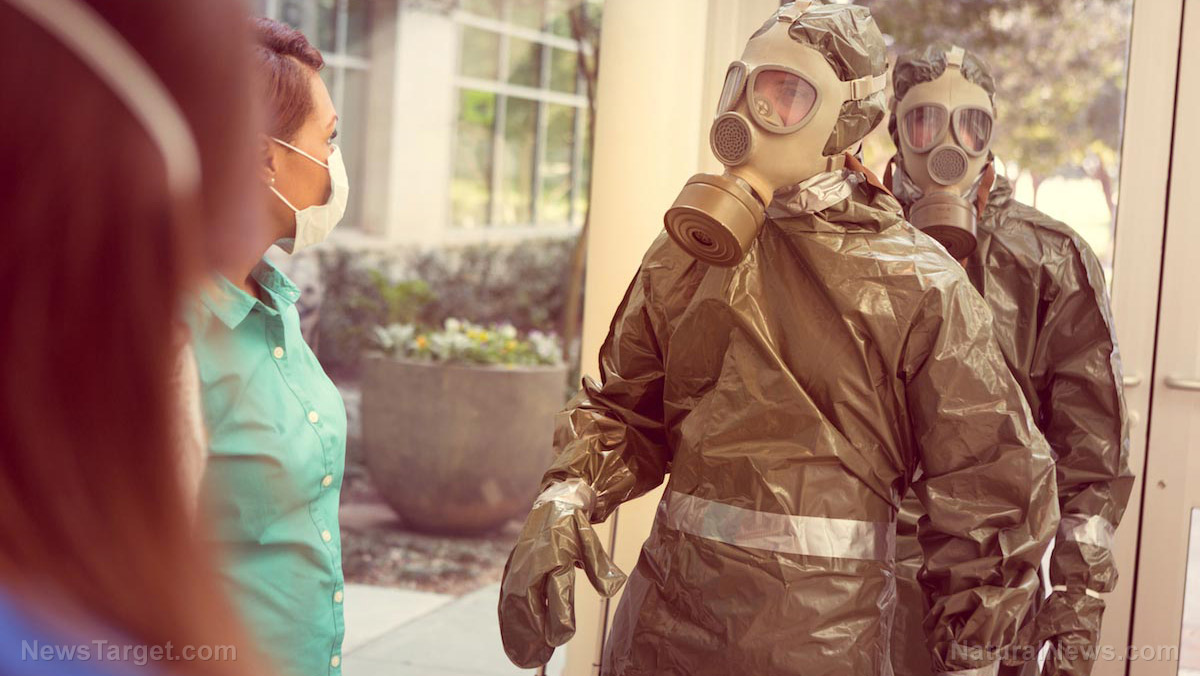
Disaster can strike at any time and anywhere, even at work. What can you do when SHTF during your shift? (h/t to PreppersWill.com)
On average, an employee spends over eight hours at the work daily. In the office, you need to be ready to face problems such as a short-term natural disaster or societal collapse. Think of self-preservation and maximum protection of life because these two factors are crucial when you're facing workplace threats. Remain calm so you can stay safe during the possible disaster scenarios listed below.
Natural threats
This category includes natural disasters like earthquakes, floods, natural fires, and storms/blizzards. These scenarios often have the same pattern but by studying data, you can find out when they'll happen again.
Read up on threats common to your location, such as wildfires in a heavily forested area, so you can stay prepared. Ask around, and make sure to talk to people who've worked at your office for a long time so they can tell you about past incidences that might occur again.
Man-made threats
Unlike natural threats that often follow a pattern, man-made threats can be a little harder to predict. This category includes two subcategories: external and internal risks.
Internal risks include arson, deliberate power outages, or an active killer scenario.
External risks on the other hand include the human factor aside from you and your workmates, such as the customers you serve on a daily basis. The human factor can be very unpredictable, and there's no telling what can make people "snap." Stay alert because these people tend to reveal their intentions either via direct interaction, like telling someone they trust, or indirect interaction, such as posting on social media.
Preventing threats in the workplace
To avoid workplace threats, prioritize mitigation. Mitigation means making the necessary preparations to "eliminate or reduce the risks of hazards through proactive measures." Most of the time, the authorities remind civilians to familiarize themselves with various precautionary measures before a disaster happens to avoid accidents or loss of life.
Everyone in your workplace needs to understand that security is your responsibility. For example, you all need to know what to do if a fire breaks out. Remember that it's all right to raise awareness about the risks of various issues, especially since this can help unite everyone against one goal: your safety.
Evacuation
All workplaces must have mandatory evacuation drills to prepare everyone for various emergencies. Make sure you know what to do when SHTF, and remember where the emergency exits are located. If these exits require access cards, you need to know where to go or who can access them.
Establish a reunification point so all work staff can assemble during an emergency. This makes it easier to reach a supervisor or a first responder team. Once everyone has been safely evacuated, it's time to head home. Prepare a get-home bag or survival kit and keep it near your work desk or your car so it's easier to travel long distances to and from your workplace. (Related: How to make a coffee can survival kit for your car, home or office.)
Sheltering in the office
You may need to stay in the office when you're facing natural disasters like tornadoes. Make sure everyone knows where you can take shelter, like a well-built room without any glass windows and other potential hazards such as high shelves.
Keep this dedicated place stocked with food and supplies so everyone has food if you need to stay at the office for a day or two.
Active killers
Man-made threats are something that you need to prepare for, and surviving an active shooter scenario requires proper knowledge. The best thing you can do is learn how to properly respond to an attack like this.
First, identify any danger zones and the number of shooters. Second, decide if the workplace will evacuate or take shelter somewhere. Third, decide if you can stay behind to help others or if you need to evacuate immediately.
When disaster strikes, you need to be able to make crucial decisions in a split second because hesitating might endanger more lives. Evaluate possible threats, consult your superiors about emergency preparation, and assess your work environment.
Stay prepared so you can survive when SHTF while you're at work. Learn more at Preparedness.news.
Sources include:
Please contact us for more information.
















